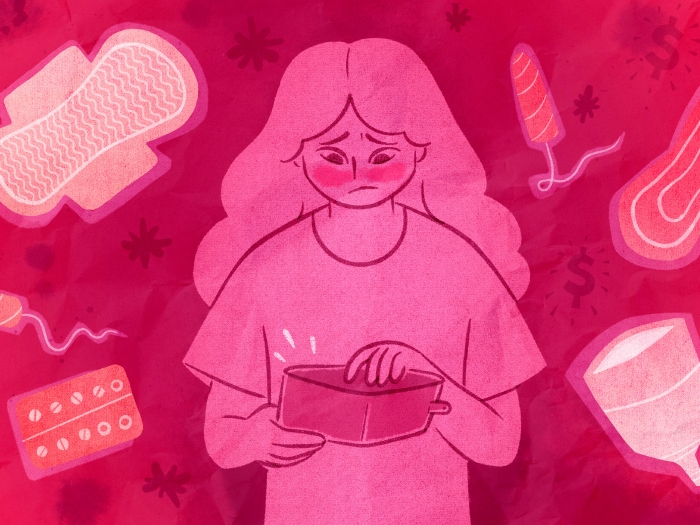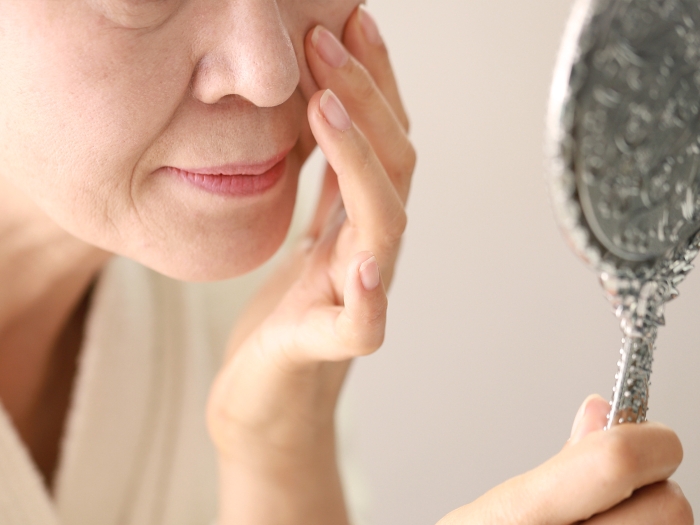
"Children are not just small adults," says Suzanne Dawid, M.D., Ph.D., the Andrew B. Briskin Research Professor of Pediatrics, specializing in pediatric infectious disease. During SEEN magazine's "COVID, Kids and Mental Health" webinar in October, Dawid was talking about disease and transmission patterns for COVID-19, but her statement could just as easily apply to all the ways kids are affected by the pandemic, whether they're dealing with social isolation or the disease itself.
In terms of the disease, children appear to get infected at a lower rate than adults. When they do get infected, research shows that anywhere from a quarter to half don't have any symptoms. They are still able to transmit the disease, but they don't seem to be very good at it, "which is really surprising," says Dawid. "For nearly every other viral infection, children are the major drivers. … [But] children do not appear to be the major drivers of this pandemic."
While children likely are infected at much lower rates than adults, and have lower rates of becoming symptomatic, the psychological effects of COVID-19 have hit them hard and are likely to leave lasting emotional scars. Their social development is being hampered, many are scared of the ways the pandemic will impact them and their families, and mental health resources are strained. Kids and teens are feeling the dearth of socialization opportunities more acutely than adults, too, and for good reason.
"For adults, it's leisure; for young people, it's their job."
"Neurobiologically, adolescence is a time when youth are making enormous growth. Socializing with other people is a big part of that," says Tammy Chang, M.D., MPH, assistant professor of family medicine and founding director of MyVoice, a national text message poll of youth ages 14-24. "For adults, it's leisure; for young people, it's their job. That's what they should be doing. … That's how they become well-adjusted adults."
Mazey Perry was a senior in high school when the pandemic began. When she said goodbye to her friends in March, they all thought they would see each other again in a few weeks. "I didn't even think to say goodbye to my teachers," she says. "As time went on, we all started to have this reality check: we are not going back."
Even when businesses began to reopen, Perry restricted her contact with friends to a small inner circle to protect her father, who is immunocompromised. Graduation was on Zoom, with prerecorded speeches, and the school hosted a drive-by event that allowed Perry to see her teachers one last time. Perry is now attending her first year of college virtually, and all of the socialization with her classmates is online.
Socialization is not just a concern for teens, though. "If you think about preschool or early elementary school students, social interaction is a lot of what they're learning," says Ebony Parker-Featherstone, M.D., medical director of Ypsilanti Health Center and an assistant professor of family medicine and obstetrics and gynecology. She encourages parents to think about creative ways for their kids to get social interaction. She recommends Caribu or similar video-calling apps. Caribu incorporates children's books and activities so that kids can read and play with a faraway grandparent or someone else.
"I think we have to validate that this is hard," says Melissa Cousino, Ph.D., associate professor of pediatrics in the Division of Pediatric Psychology. "I don't know that we have easy solutions for this." She recommends taking advantage of online socializing as well as finding creative ways for kids to be together safely, such as bike rides and hikes.
"I think so many parents are out there and yearning for answers that may not exist, unfortunately." Cousino believes it's important for parents to normalize their kids' big feelings and tell them, "It's OK to feel sad about this. We're feeling sad about canceled weddings and social events and birthday parties and all of those things, too."
Parenting priorities: "They can't all be glass balls."
Cousino uses a juggling analogy to illustrate the difficulty parents face when prioritizing all of the different demands on them, especially during the pandemic. "You can only have so many glass balls. They can't all be glass balls. Some are going to have to be rubber balls." For Cousino, the two "glass ball" parenting priorities she recommends are structure and warmth. "Maybe math is a glass ball one day and another day not."
Another thing parents can do is manage their own stress. "When parents are stressed, the kids are stressed," says Anita Hernandez, M.D., assistant professor of family medicine. "One of the key things is how the grownups around them are taking care of their own needs at this time. Taking the time to play … as well as exercise and eating well. When we're stressed, we let those fall by the wayside, even though they're the most important thing to keeping us healthy."
In addition to doing basic self-care, Sheila Marcus, M.D., professor of psychiatry, says parents need to work on regulating their emotions. She spoke at a livestreamed "Back to School" panel discussion. "Whenever you're dealing with someone who might be having some anxiety, the first person whose anxiety you have to manage is your own," she says. "Make sure you're grounded before you help your kids."
Parents play a large role in cultivating resilience and helping youth to make the most out of difficult situations. "By role modeling positive behaviors, tackling this challenge can result in enormous growth and development among young people, and it can strengthen family relationships," says Chang.
Many parents are worried their kids will suffer academically and socially, if school is all virtual this year. "The relationship with parents is what we call the secret sauce," says Marcus. "That is the thing that sets children up for success: cognitive success and success with intimate relationships. So don't discount yourself."
Cousino also wants parents to remind themselves that learning is still happening during the pandemic. "It may not be what learning looked like last fall. We're learning how to be flexible and tolerant of people with different beliefs. We're learning about public health and how our own behaviors impact all of those around us."
Because school is happening on a screen for a lot of kids, many parents are concerned about the effects of increased screen time. According to Jenny Radesky, M.D., assistant professor of pediatrics, worries about screen time shouldn't be a glass ball for parents right now. During the "Back to School" livestream, she told parents not to worry too much about the time spent on screens, especially if it's synchronous learning time. "Parents are saving lives by keeping kids socially distanced from each other. Don't feel guilty. Feel like a hero." She emphasized that what kids watch matters more than how much. "This is an important time to be choosy about content. Watch together and make time to talk about it. Veg out together in front of a movie."
Virtual school
Online school was a struggle for Perry, especially because it was her senior year, when most teens have a difficult time staying engaged. "It was so easy to lie in bed and have your computer on and your camera off and just lie there and not be engaged," she says. "It was definitely a difficult transition to get yourself motivated to do your own work."
Perry is not alone. In May, MyVoice conducted a national poll of youth ages 14-24. Of the nearly 1,000 respondents, 28% reported worsened motivation and productivity. One respondent says, "My brain cannot switch from home = relaxing to home = learning, and my motivation, time management skills, and ability to keep track of assignments and tests went completely out the window." Another says, "It's been super hard to concentrate on work with my whole family home and hard to stay motivated when I don't have to go to in person classes."
The challenge for younger kids in virtual school is different, but no less difficult. And it can be even harder on parents and caregivers. Hernandez has a 2-year-old and another child who is almost 5. The older child is in a virtual young 5s program. Helping the older child stay engaged with school takes a lot of time and effort, but Hernandez's family has made it work by creating a "pod" with another family. The parents in both families share the responsibility for managing virtual school.
Stacy Ebron is the mother of two boys who are in kindergarten and third grade in Ann Arbor. She has been vigilant about pandemic safety measures. "All the play time has been outdoors," she says. She also has decided to keep both of her children in a virtual education program this year. It hasn't been easy to manage the intricacies of a virtual school day with multiple login times, especially with a kindergartner whose sense of time isn't very well developed. But she has been determined to stay the course. "I wasn't going to risk infection, when I could make the sacrifice [to stay at home with the kids]."
Extra challenges for at-risk kids and teens
Ebron also is committed to virtual school because it is in line with her values. "My primary reason was for equity," she says. Ebron has been an advocate for racial equity in the schools and is currently working with the group AASPIRE (Ann Arbor School Parents Intent on Racial Equity). Ebron believes it's important for parents to keep their kids at home, if they have the means to do so. "I want to make sure Black and brown kids who have families who are essential workers would have priority to go back to school." Ebron also has written letters to the school board advocating for increased support for kids with special education needs.
Hernandez is also concerned about equity. "Those of us who have means seem to be able to shelter our children better than those of us who don't," says Hernandez. "I worry about that disparity presenting itself in disease rates." She mentions children whose parents are essential workers. They may be at a greater risk of catching and spreading COVID-19 if they are in a day care setting or receiving care from a large group of family members.
"The other things I've noticed talking to mothers is how [the pandemic] makes everyday life more complicated. I was talking to a mother who has had to remain on unemployment because she has two young children. There are no day care facilities accepting new children, so she can't go get a job.
"I have real concerns about how we are disproportionately affecting those who are the most vulnerable in our population. … I've been disappointed that there haven't been efforts to increase the childcare workforce to reduce the ratio of kids to caregiver. Or even podding, an approach where we're able to contact trace very well. That's a big issue. When someone gets sick, you have to know who the contacts are."
While some parents are worried about too much screen time, others are worried about lack of access to the internet and technological equipment — for virtual school as well as access to health care. Parker-Featherstone and Layla Mohammed, M.B., Ch.B., assistant professor of pediatrics, say they've been doing more phone visits at Ypsilanti Health Center, because some of their patients aren't equipped to do video visits. Parker-Featherstone says this is an issue seen across Michigan Medicine's ambulatory sites. When asked what would help, 22% of youth responding to the MyVoice survey said they needed access to better technology (computer and internet), a dedicated workspace, and other resources, such as a building or lab, to improve working and learning from home.
Kids' and teens' physical health
Whether or not kids and teens contract COVID-19, the pandemic has the potential to wreak havoc on their health in myriad ways.
Parker-Featherstone worries that the pandemic is keeping parents from scheduling routine check-ups. "There are a lot of patients we're not seeing. Our well child exam rates are down. There are a lot of folks who are concerned about presenting for care and delaying well care. However, our health centers remain open to provide safe and compassionate care for pediatric patients and their families."
"I'm used to seeing kids at a school-based health center, where we can screen for things like physical abuse, worsening mental health, and people having asthma attacks," says Chang. "Now a lot of schools aren't open, and I worry there are things that we're missing."
Mohammed points out that the number of the federally funded Vaccines for Children, or VFC, immunizations offered to patients has decreased. Mohammed also is worried about people putting off well-child exams, which allow providers to screen for physical and emotional well-being as well as update routine and seasonal vaccines. "That's a huge concern of ours. We're very happy the flu clinics are open. The drive-throughs are available, but we prefer to see a patient to do a full physical and emotional health evaluation."
Many kids and teens have fewer athletic opportunities right now, and virtual school means a lack of in-person physical education and recess. This has caused some parents to worry about their child's lack of activity and the effects it may have on their health. The U-M Exercise and Sports Science Initiative hosted a panel discussion called "Keeping Youth Physically Active During COVID-19" in October that offered some guidance. The primary advice was for parents and caregivers to take a bigger role in their child's physical education and exercise routines, finding ways to get active as a family.
"Youth are the experts on their own experience."
When we're wondering how best to help kids and teens through the pandemic, sometimes the best thing to do is ask for their opinion. When asked what would help them, nearly 19% of the MyVoice respondents said they needed to make changes to their own lives, such as better scheduling, improving their habits, and being more patient and understanding towards themselves. Some also cited a need for more motivation.
In her final weeks of high school, Perry had a project to keep her motivated and focused. She was the host of "Kids These Days," a Michigan Radio podcast about teens that Perry helped create. "Being a part of that podcast, I didn't have an option to not work on that. It wasn't like you could just blow it off. It was like a job that I signed up for." Because the podcast was created by teens and addresses their concerns, it offers a chance for adults to listen more deeply to young people.
"Youth are experts on their own experience. … Parents are trying really hard and doing a lot already," says Chang, who has an 11-year-old son and a 10-year-old daughter. "Sometimes when you're so physically close, you might not check in the same way. Take time to really ask how your young people are doing and what their life is like virtually. There are a lot of things that happen virtually that parents might not be aware of. It would be great for adults to explicitly check in about those things, if they have the bandwidth."
In addition to motivation, some kids and teens need parents, teachers, and community leaders to notice when things are going well. Online school has actually been better for some kids and teens than in-person school. Hernandez says we should pay attention to that and think of ways to accommodate those students when in-person school becomes the norm again. There are also teens who are less stressed since the beginning of the pandemic, because their schedules are less chaotic. "Especially for people who are more resourced, it can be less stressful than before," says Chang. This may be another wake-up call that the pandemic has occasioned.
For more resources, check out the C.S. Mott Children's Hospital Thrive with Your Family video series and coronavirus updates for parents.





